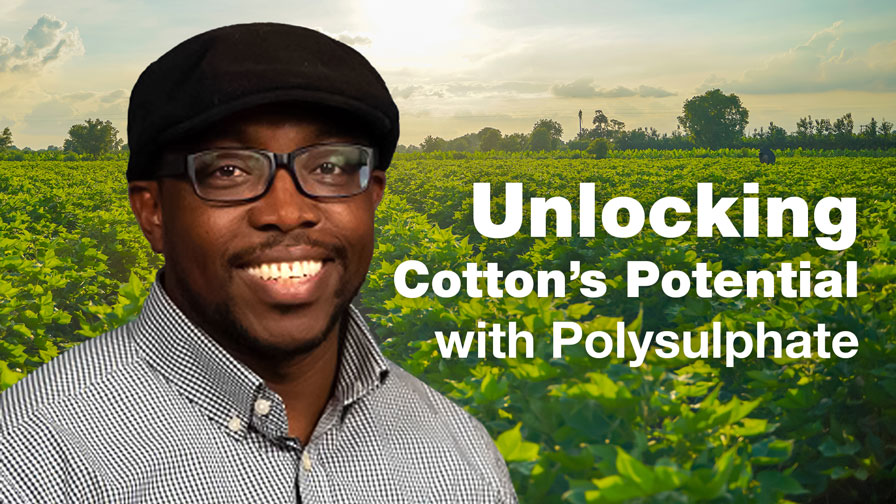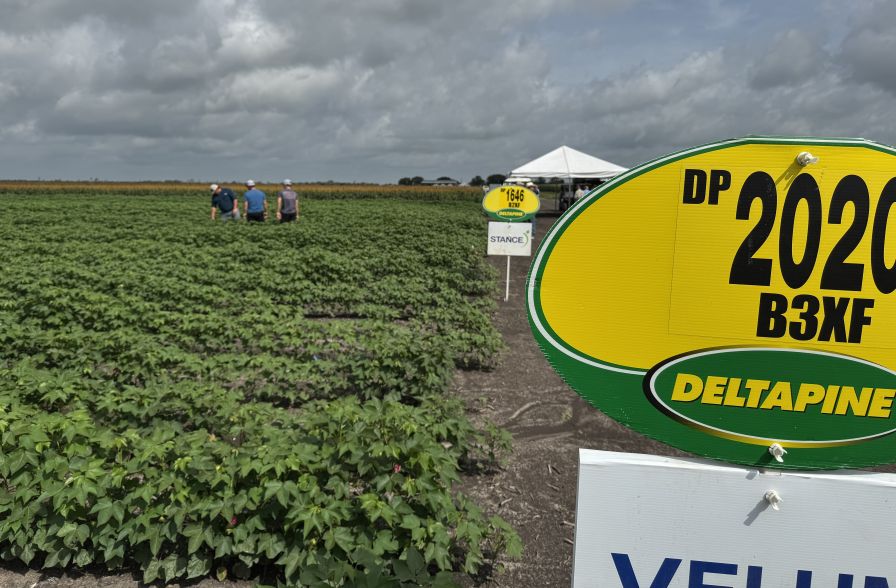Today’s Students Will Drive Tomorrow’s Demand for Cotton

When discussing sustainability, “demand enhancement” isn’t usually the first thing that pops into a person’s head. But without a viable business model, there can be no sustainability – and without demand, there is no business.
As the cotton industry continues to improve cotton’s performance while reducing its environmental impact, we must simultaneously work to ensure there’s a market that wants to buy products made from natural fiber. To date, cotton remains the top choice for consumers, but it took a lot of hard work to get it to that position, and it will take a lot more to ensure that demand remains high.
Getting the Message Out
Cotton demand enhancement activities usually revolve around groups of consumers that are part of a demographic that is likely to be receptive to a cotton message. This is accomplished by targeting age, income, culture, location, and other various traditional measures. Then promotion techniques are compared, and their ability to deliver an appropriate message is judged.
Those efforts are supported by ancillary activities such as contests and sponsorships. The process is usually grounded and presented in well-thought-out time and action calendars that are loaded with tools, all of which add up to the best-case scenario.
In cotton demand enhancement, the best-case scenario means that we will have reached many potential cotton customers efficiently within the demographic target we have identified, and we will have provided them with a positive message that they find compelling.
In closing the loop, we hope to influence our target consumers to want to own more cotton products, and we hope they will buy them. If our message is constructed properly, they will not experience “buyer’s remorse” afterward, and will feel good about their purchase, even if it costs a little more. Hopefully they will come back again for a repeat purchase.
While this planning process is logical and sometimes effective, it definitely reflects “yesterday’s thinking.”
Organizations marketed this way in the 1990s, but it’s 2012. This kind of thinking went extinct with the formal, 40-page business plan. Those plans usually contain a long and calculated implementation strategy, and an even longer profitability analysis.
Today’s investors and venture capitalists don’t want that. They want a few slides that describe the core idea and the project potential, and a demonstration of your abilities to accomplish that. One investor recently characterized old-line business plans as the “greatest fictions since ‘Gone with the Wind.’” If investors like the idea – and equally important, believe you can do it – they want to move ahead at the speed of light.
It’s the same with cotton demand enhancement. To begin with, most cotton promotion programs take minimum of two to three years to show tangible results. Because of the long timeframe, the program profiles usually the end up vastly different from the original concept. That’s good, because the consumers you were targeting in the beginning have probably aged out of the demographic by this time, and new consumers are in their place.
However, the problem is that if you try to communicate with their replacements the way you originally planned in the beginning, you will more than likely fail.
Today’s consumers won’t hear you. They communicate digitally, and they will only pay attention to those who speak their digital language.
Here’s a quick test: You’ve probably heard of Facebook, Twitter, and Linked-in, but what about Tumblr, Foursquare, Pinster, and Instagram? Even if you know what they are, do you know how they’re used?
Is your company doing something more creative with quick response (QR) codes than just linking to a site? Innovative companies use them to highlight special sales, cross-merchandize, compare prices, and evaluate the customer experience, among other things. Is email still your preferred method of contact, or have you moved on to texting? Are you still composing emails as if they are being read on a computer, or have you realized that the young professionals are reading these them on a smart phone?
The problem isn’t the way they read; it is the way we write. Do you think your organization is on the cutting edge simply because you put up a website over the last 12 months?
Finally, are you communicating on your laptop, or on your mobile phone? Mobile is definitely the the future for this generation (even though this “future” might only last a few years before a “new” future emerges).
If you are planning a marketing campaign that’s based on print and broadcast, at least make sure it targets a demographic that responds to those methods, or use it only to reinforce your digital message. Then again, if you are targeting 18-34 year olds, you might not even want to bother with “traditional methods.”
Paying the Piper
The cost of demand enhancement activities is another issue. If you have not promoted cotton because you think it’s too expensive, you will need to find another excuse. You might not have the expertise to launch a digital campaign, but that expertise is easily obtainable – and cheap compared to traditional communication.
I have watched 40 graduating college seniors launch those types of campaigns each year – beginning eight years ago – with traditional communication methods, and they have moved almost completely into social media since that time. Throughout that period, their costs have gone down while their reach has shot up.
You can follow consumers through their lives and promote cotton to them, but you can also reach a group of individuals who can increase cotton consumption exponentially by developing fabrics made from 100% cotton (or at least higher cotton-content blend levels). These are the emerging fashion professionals graduating from design and textile colleges all over the world.
A consumer might buy a pair of jeans – or even 10 pairs over a given timeframe – but the fabric development professional can create a line of jeans that might ultimately sell 10,000 pairs or more per year.
These emerging professionals’ ages when they graduate don’t change, but their communication methods do. They still need to hear the cotton message, so you need at least part of that message to be delivered on their phones, at least for now.
The most notable effort in this area is U.S.-based Cotton Incorporated’s new program entitled Cotton University, which was designed to maintain contact with those who have been schooled in cotton application and plan to use that expertise in their careers.
The International Forum for Cotton Promotion (IFCP) believes that focusing on and assisting emerging professionals will create loyal cotton users and product developers for generations to come – and we will communicate that message in whatever format and media is necessary to ensure they understand.
Go to page two to learn more about the approval of Cotton Incorporated’s proposed budget.
Promotion Budget Approved
During its Annual Meeting in Salt Lake City, Utah, The Cotton Board reviewed and voted to recommend Cotton Incorporated’s proposed 2013 budget of $83 million to the Secretary of Agriculture. During the meeting, The Cotton Board also elected Kevin Rogers, a producer from Mesa, Arizona, as its Chairman for 2012/2013.
The budget and plan, along with The Cotton Board’s recommendation, will be forwarded to the United States Department of Agriculture (USDA) for final approval. The Cotton Board voted to recommend to the Secretary of Agriculture approval of a proposed $83 million budget for the Cotton Research and Promotion Program, developed for and to be carried out by Cotton Incorporated.
The proposed budget represents a 3.8% increase over the 2012 budget and if approved, would become the highest budget in the Program’s history.
The budget and plan for 2013 proactively positions Cotton Incorporated to respond to cotton’s recent loss of share in fashion and home furnishings markets, as well as to address the rising input costs of production and the mill processing costs of cotton. Cotton Incorporated’s proposed budget reflects many of the recommendations developed in March by The Cotton Board.
“We commend Cotton Incorporated for its responsiveness to our recommendations and the thoughtfulness represented by this proposed budget,” said Chairman Rogers. “I know this proposed plan will continue to move the cotton industry forward.”









